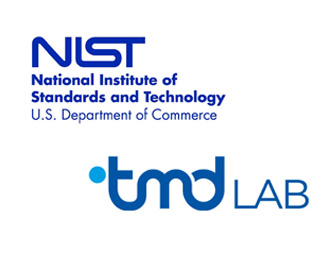News
TMD LAB collaborates with US NIST to reveal the secrets of shape-memory polymer (SMP) materials (Oct 22, 2022)
TMD LAB (CEO Hak-Joon Sung) and
the National Institute of Standards and Technology (NIST) under the US
Department of Commerce are starting joint research on the properties of SMP
materials.
TMD LAB received a Cooperative
Research and Development Agreement (CRADA) proposal from the NIST and signed
the agreement on October
11 2022. Both sides are expected to build a DNA database for various SMP
materials through joint research and develop materials that further reduce the
formation of biofilms, thereby enhancing the utility of SMP as implantable
medical devices.
TMD LAB and the biomaterials
group of NIST signed a confidential disclosure agreement for joint research in
April last year. In addition, basic research on the structural properties of
SMP of TMD LAB has been conducted.
The biomaterials group of NIST is
composed of researchers specialized in various biomaterials and cell-to-cell
interactions, microbial measurement, spectroscopy, etc. And they showed a lot
of interest in the characteristics of SMP of TMD LAB, which led to the
conclusion of CRADA (Cooperative
Research and Development. Agreement).
SMP developed by TMD LAB can
restore shape near body temperature and control the speed of shape recovery
from several seconds to several minutes or more. In addition, it is
characterized by reducing the formation of biofilms caused by microbial
infection by 74% compared to silicon. TMD LAB is developing various medical
devices inserted into the human body, such as non-vascular stents such as external vascular wrapping
support and bile duct stent, ophthalmic devices, and plastic implants by
utilizing the characteristics of these SMP.
Hak-Joon Sung, CEO of TMD LAB, explained,
“I know that it is rare for NIST to sign a joint R&D agreement with a
foreign private company. We expect that this joint research would facilitate
the expansion of the market for implantable medical devices using SMP.”
- New post
- There is no new post.


 NIST_TMDLAB.jpg (50.2 KB)
NIST_TMDLAB.jpg (50.2 KB)






